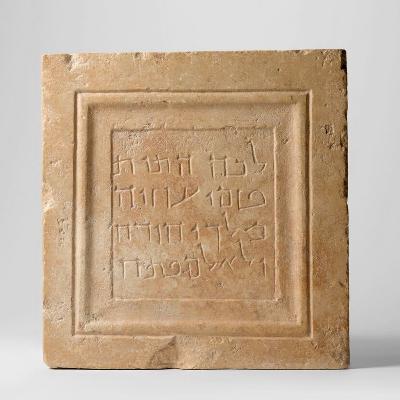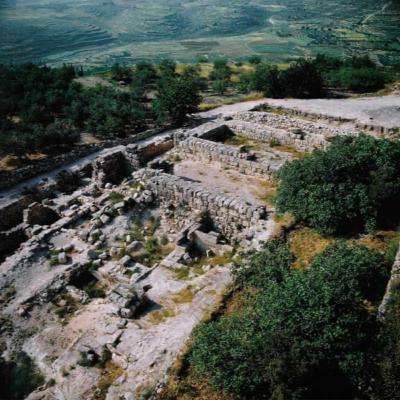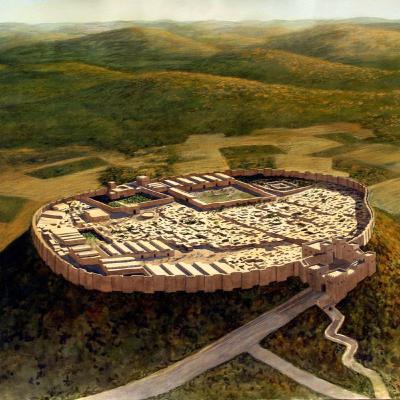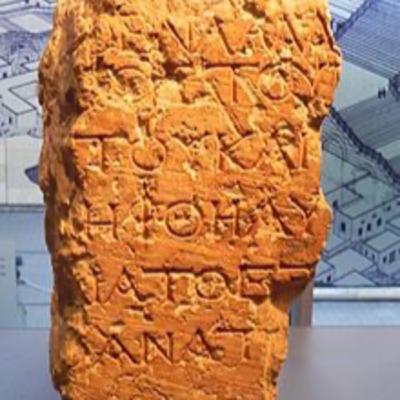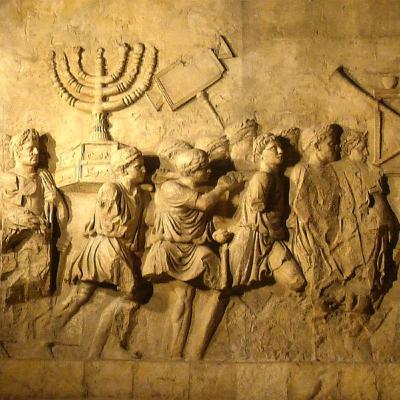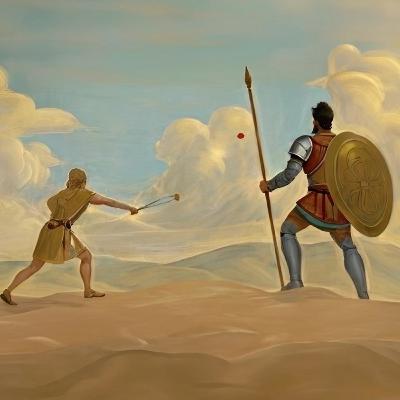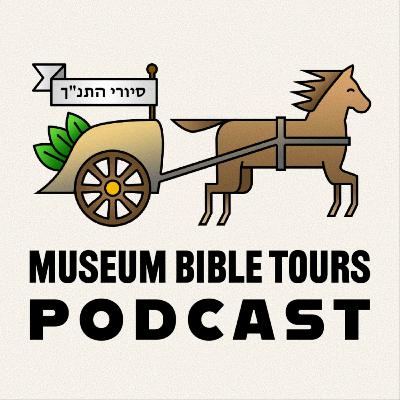Discover Museum Bible Tours Podcast
Museum Bible Tours Podcast

31 Episodes
Reverse
He’s best known as the “Leprous King” and one of Judah’s longest-reigning monarchs. Despite his 52-year reign, however, the biblical account of his kingship is contained primarily in only two chapters of the Bible—2 Kings 15 and its parallel chronology, 2 Chronicles 26. Within the brief account of his reign, this fascinating king, identified by two different names, presided over a significant period of Judahite prosperity, made a fatal mistake in the temple, and became a leper. Learn more about him in this informative MBT podcast.
Hazor was one of the most significant sites in the Bible Lands. Its power was widely felt before the arrival of the Israelites, and it would have been one of the main lynchpin cities for them to conquer, ‘for Hazor was the head of all those kingdoms’. (Joshua 11:10) Hazor would also later become a powerful Solomonic fortress. Yet for all the important finds made at this historical site, a debate rages as to how they match up with the biblical record, especially of Joshua and his conquests. We’ll examine this dispute, as well as the wider history of this once-formidable city-fortress, the largest site in all biblical Israel.
The most noteworthy capital city in the Bible was ancient Jerusalem. Perhaps the second most noteworthy city was ancient Samaria. For some 200 years, Samaria was the capital of the ten-tribe kingdom of Israel. But what do you know of Samaria? And why was it a capital among northern capitals?
The ancient Romans were outstanding builders. Among their greatest achievements were the stone-paved roads throughout the Roman Empire. The enormous Roman Empire boasted a vast and extensive network of roads. The road network was essential in maintaining the stability of the empire and its expansion. The streets were used for transport from one location to another. “The Roman roads were probably at their best during the first century after Augustus had put an end to war and disorder. . . . Thus St. Paul traveled in the best and safest period,” wrote New Testament archaeologist W.M. Ramsay.
This micro-podcast will highlight the following: Of the buildings that were situated on the temple grounds, there is the Trumpeting Place Inscription and is the only significant item remaining, thus confirming the fulfillment of Jesus’ prophecy at Matthew 24:1, 2. Listen to this podcast to learn more.
Megiddo has been the scene of some 34 decisive battles throughout its long history, of which a few are recorded in the Bible including Deborah’s and Barak’s great victory against Jabin king of Canaan and his general Sisera found in Judges Chapter 4. Find out in this podcast episode how Megiddo has prophetic significance for our day.
A nondescript block of limestone, clumsily broken, nicked up on the sides and pitted with age, is certainly not impressive in the way that is looks. Furthermore, It is placed inconspicuously on a shelf at the Israel Museum. But its evenly cut face and distinctly inscribed Greek letters with traces of red paint still faintly visible belies its enormous significance. The broken limestone inscription is known as the Temple Warning inscription. Find out more by listening to this MBT Podcast.
Today the Arch of Titus is much admired by the hundreds of thousands of people each year who visit the Roman Forum. Some view the arch as a majestic work of art, others as a tribute to imperial Roman power, and yet others as an epitaph to fallen Jerusalem and its temple. Careful readers of the Bible, however, view the Arch of Titus as having even greater significance.
Assyrian King Sargon of the eighth century BCE, also known as Sargon II, is mentioned just once in the Bible. At one time Bible critics doubted his existence because up until the 19th century, he was completely unknown to archaeology. Even the Jewish historian Josephus whose writings were extensive did not mention him. Nothing of the king is recorded in classical histories. However, in the 1840’s, archaeologists began excavating the palace of Sargon. Now, he is one of the most famous Assyrian kings.
Although Paul’s visits to Ephesus and Thessalonica, make up only a small part of the Acts narrative, Luke’s use of official titles and the two detailed accounts exhibited a degree of precision that would seem difficult without being an eyewitness to the events. Moreover, his accuracy compares favorably with other Greco-Roman historiographers.
Few Bible accounts are more thrilling than David slaying the Philistine giant Goliath. David, still a shepherd boy living in Bethlehem was visiting his brothers in Israel’s camp when he hears the blasphemous shouting of Goliath. David runs toward the giant to defend the name of his God and his people. He brings him down as the greatest Philistine warrior with a single stone.
To many Bible critics, the account of David defeating Goliath is a complete fantasy or an exaggerated folktale based on dim memories not written down until hundreds of years after the event. But there is much evidence to support the fact that David and Goliath were real persons and their battle recorded in the Bible actually happened.
This episode is titled: “The Gallio Inscription” and is the second in the series: “Discoveries Related to the Apostle Paul”:
According to Acts recorded by Luke, Gallio was the proconsul of the Province of Achaia before whom Paul was brought. But, during the 1800s scholars questioned whether Luke was in fact in error regarding whether Gallio was ever in Corinth.
However, in 1905 archaeological evidence for Gallio was discovered at Delphi, Greece in the form of an inscription that states that the proconsul or governor of Achaia was Junius Gallio and a friend of Emperor Claudius. It came to be known as the Gallio Inscription.
By the year 740 B.C.E. the invading Assyrian armies swept through the land, led by King Sennacherib, and had conquered many Israelite cities including Samaria, the capital of the ten-tribe kingdom of Israel. Now eight years later Sennacherib is determined to destroy the city of Jerusalem. King Hezekiah of the Kingdom of Judah is frantically preparing his capital city for the impending attack as described in the Bible. The Bible also describes Hezekiah as building walls as part of his defensive strategy. Are there any archeological finds from this time period?
Yes, 1969, Israeli archeologist and Professor Nahman Avigad discovered remains from this period. One of the excavations revealed a section of a massive wall. The wall was most impressive at 23 feet thick and 20 feet high! It was suggested that it might be the “Broad Wall” referred to by Nehemiah some 250 years after the time of Hezekiah. Today it lies exposed as an open-air centerpiece of the Jewish Quarter of the Old City.
Located in the Cairo Museum in Egypt, is an inscribed black granite stone called The Merneptah Stele, and describes Pharaoh Merneptah’s military victories. It was discovered by renowned British archaeologist Sir Flinders Petrie at Thebes (modern-day Luxor) in 1896. The stele itself is dated to the year 1205 B.C.E. and refers to the name Israel. This means that the Merneptah stele is the earliest authoritative extra-biblical reference to Israel known to date.
F. A. Klein, a German missionary, discovered a large inscribed stone in Dibon (now Dhiban) in Jordan in 1868. Klein's discovery became known as the Moabite Stone or Mesha Stele.
What is the significance of the Moabite Stone?
According to the Louvre, it "represents one of the most important direct accounts of world history that is related in the Bible." Ernest Renan, a French expert on Semitic languages and civilizations, called it "the most important discovery ever made in the field of Oriental epigraphy!"
“Gaʹius, host to me and to all the congregation, greets you. E·rasʹtus, the city treasurer, greets you.” — Romans 16:23.
“E·rasʹtus stayed in Corinth.” — 2 Timothy 4:20.
An official by the name of Erastus purchased a paving stone close to the theater at Corinth, the Roman province of Achaia's capital, somewhere between the middle of the first century CE and maybe shortly before 50 CE. The Latin inscription reads: "Erastus, procurator [and] aedile, laid this pavement at his own expense." It was found by Professor T. L. Shear in 1929.
The high-ranking Corinthian official who put the paving stone at his own expense was probably Erastus in Paul's epistle. The Latin inscription reads: "Erastus, procurator [and] aedile, laid this pavement at his own expense." It was found by Professor T. L. Shear in 1929.
Erastus of Paul’s epistle was likely the high-ranking Corinthian official who laid the paving stone at his own expense.
The British Museum today houses the Cyrus Cylinder. It relates to how King Cyrus conquered Babylon in 539 b.c. It also informs how Cyrus arranged for the Babylonian captives to return home and restore their original religious traditions. Prior to the discovery of this cylinder, academics believed that the history described in 2 Chronicles and Ezra was a fabrication. The Cyrus Cylinder's finding provides confirmation that the biblical account of Cyrus's decree is genuine.
Based on the Masoretic Text created between the 7th and 10th centuries CE, historians were unsure how trustworthy the Hebrew Scriptures actually were until the discovery of the Dead Sea Scrolls. There would undoubtedly be difficulties after a thousand years of copying. Could we ever be certain, for instance, that the scribes, despite being skilled copyists, made no mistakes? We now had a whole Bible copy from the Hebrew Scriptures that was almost 1,000 years older than the medieval copies thanks to the discovery of the Isaiah Scroll from the second century BCE. This was a sensation in every way! Texts dating back more than a thousand years could now be thoroughly analyzed. The Isaiah scroll was the measure of the Bible tradition. It was found that the text had been excellently copied.
Lachish was an ancient Judean city in the Shephelah or lowland, fiercely walled and built on a mound. After Jerusalem, it was the second most important city in the Kingdom of Judah. As a result, Sennacherib made Lachish a special target during his sweeping conquest of Judea. In 732 B.C.E., Assyrian King Sennacherib assaulted Lachish. Is there archaeological proof that King Sennacherib besieged Lachish? Indeed. Sennacherib memorialized his triumphant military campaign against Lachish in a set of wall reliefs that adorned one of his palaces at Nineveh. This episode contains a portion of "Epic Cinematic Trailer" - ELITE by Alex-Productions.
Joshua's sixth chapter vividly recounts the fall of Jericho, which occurred over 3,500 years ago. But did this incident really occur? Many disagree, including those who reject the Bible and assert that it contains many tales that were written hundreds of years after the alleged occurrences. Many archaeologists contend that the biblical account is unreliable. They claim that Jericho may have never existed when the Israelites arrived in the Canaanite region. But according to the Bible, Israel's first Canaanite city conquest was Jericho. In the first part of the 15th century BCE, the city was destroyed. It was abandoned for hundreds of years before being fully destroyed by fire.


